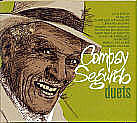|
|
|
|
|
|
|
|
|
|
|
|
 |
|
The Zen-minimalist features of the Shigaraki gear naturally invoke conceptual -- i.e. premeditated -- predictions for the associated sound. There are the small sizes and minuscule signal path lengths. There's the compact parts counts and elimination of perceived redundancies - such as digital or analog filters in the DAC, or the table-of-content reader in the transport. The former are simply MIA, the latter must be manually engaged. After 7 seconds of whirring underneath the magnetic disc clamp, the dim orange-hued readout displays the TOC. For subsequent playback, said portion of the circuit is effectively deactivated. Hitting play (or direct-access keys + the play button on the generic plastic remote) then locks onto the chosen digits with commendable alacrity. (Lazy Susans and Sams will dig through their arsenal for that one test CD with the most ludicrous thirty-something track count. Once displayed, any CD with less tracks will now play without this preparatory mini ritual. Should its tracks manage to exceed the previously clocked TOC count? The player won't recognize the additional ones. Solution - don't play test CDs!)
Engineered simplicity. Focus on essentials. Would those dead-obvious outer qualities translate neatly into sonic parallels? If so, how exactly does such Zen minimalism sound - a scaled down version of reality? Bonsai audio?
|
|
|
|
On John Surman's Private City [ECM 835780, 1987], the 24/192 upsampling Cairn did indeed sound different. Hearing it wasn't too difficult; grasping the what and how more so. Le Frenchman created more emphasis - on the mechanical fingering noises of recorder and bass clarinet; on certain register-specific nasal constitutents of the latter's full-bore delivery; on those ambient cues that lit up audible space. Le duo japonais, while perhaps less dynamic and possibly a mite more hooded, felt less pushy and distinctly more lyrical. The same key clicks and alterations of timbre were present - albeit not highlighted. Venue ambience was audible - yet more blended into the primary sounds. You'd call the Cairn of higher obvious resolution; but also striated by certain effortful tensions. This made its presentation exciting in an athletic sense, the Shigaraki more relaxed, easeful - flowing rather than forceful. |
|
 |
|
This teeming sensation seemed a function of a more organic envelopment or wholeness which the Cairn -- by virtue of its resolved and thus emphatic highlighting -- kept separated as part-icular attributes. Since this personal reaction proved overwhelmingly repeatable on every subsequent CD, let's accentuate this differentiation more clearly. Each time I thought the Cairn delivered more, I went back to Shigaraki only to find that it delivered the same detail as well. The difference? The Cairn was more obvious about "pushing" these details at me. Shigaraki presented them enfolded in the tune. The old forest-versus-trees thing (and branches and leaves and insects on those leaves). Butterflies on pale green aspens shimmying in the wind are pretty, indeed - but does such focus have you lose touch with the forest as such?
Here's another example for the same phenomenon: In order too see the house you're living in, you must step outside of it. The farther you move away, the more clearly you understand its size, proportions and distinguishing features relative to its surroundings. With this greater appreciation for context comes a certain distance - you're no longer in the house. You're outside of it. With the gain of greater perspective/resolution comes a loss of intimacy, coziness and at-one-ness.
|
|
 |
|
 |
|
 |
|
|
< [left to right] Transport power supply; transport; DAC power supply with half-depth DAC on top; Bel Canto DAC-2; Jolida JD-100 with piggypacked Cairn Fog V2.0 on shelf below. |
|
In musical terms, this type of high-detail resolution can come at its own cost. It's as though you took twine and untwisted it enough to separate out each individual strand into a fully feathered end. You can now clearly distinguish the exact number of strands that make up this rope. Yet taking it apart has also undone the oneness it rested in before - uninspected but accepted, less detailed but eminently useful.
Am I accusing the Cairn of undoing the music? Hell no. But the Zen dwarves did prove more useful at creating the feeling that I was inside the music rather than looking at it from the outside. But remember - developing such a conceptual gestalt whereby to explain my concomitant emotional/participatory reaction vis-à-vis that of my reference requires a bit of, ahem, circling 'round, revisiting the same subject from different angles. Hopefully this parlays enough of a glimpe to drive the impression home. For example, I'm tempted to call the Shigaraki softer. Only by comparison does the Cairn seem more keen and incisive. But this softening doesn't incur blurred timing integrity - the Shigaraki's quite the toe-tapper. Still, it's clearly different. Punching up the overall loudness acted as a diagnostic tool similar to cranking up hue-specific saturation in PhotoShop. Such isolated oversaturation of digital images clearly identifies embedded color constituents that remain invisible at regular values.
At higher output voltages -- not ridiculous but realistic if sitting at nearfield distance to the performers -- a hint of stridency and hardening crept into the Cairn but not the Shigaraki. Separating with this trick their respective traits into greater audibility, the ceramic siblings just kept sounding fuller, more corpulent and robust while the Cairn veered into minor thinness. Returning to regular volumes rendered this distinction far more subliminal. You'd never call the Cairn lean. Yet now the question arose. Was the Shigaraki perhaps more fleshed out - raw unfiltered juice from ripened fruits while the Cairn injected a dose of sparkling water for more sizzle, fuzz and airiness yet less weigh?
|
|
|
|
Time to cite more specific music examples. The incomparable Compay Segundo's tribute to the African thunder god -- "Saludo a Changó", with Algerian Rai sensation Khaled [Duets, Warner Music, 43228-2, 2002] -- suggested itself for its viril vocal timbres. Again, the Cairn emphasized and thus lit up percussive instruments and the occasional raspy white noise components in Compays voice as though its treble reach went farther. Ditto for the sense of space made visual by HF boundary reflections. Shigaraki was a shade darker, weightier, less spacious (the lack of the aforementioned fuzzy/aerated quality), texturally of higher thread count and thus denser.
|
|
|
|
|
|
|
 |
|
The fact that Shigarkaki's added physicality didn't slow or confuse timing accuracy pointed at frequency response or harmonic distortion rather than leading edge components. To check this assumption, I cued up "Tatá" on Vicente Amigo's Grammy-award winning Ciudad de las Ideas [BMG 74321 78495-2]. This is modern Flamenco at its best. For diabolically off-beat syncopations between virtuoso guitar, percussion, trumpet/sax and backup singers, this track's rhythmic complexity is a torture test for rise times and beat fidelity.
|
|
|
|
Shigaraki didn't miss a beat, trip, blur or drag. It simply relaxed some of the track's high-strung nervousness, a transformation of mien I didn't think possible without undermining its rhythmic verve. The Cairn's rendition, without being objectionable in the least, was simply more etched or crystallized - sharper not as much in focus as in heat or spiciness.
"Bolero de Vicente" is a crossover masterpiece combining Spanish guitar, a 16-headed string orchestra, percussion, bass and harmonica. Shigaraki's strings were sweeter, the Cairn's greater separation rendered a more precise head count. |
|
 |
|
Cairn's solo harmonica had more bite, Shigaraki's more mellifluous romance. On balance, two aural deliveries I could get fully behind: My resident one more HiFi-ish or detail-oriented, the newcomer's more concerned with the underlying flow. At higher levels, the latter was clearly preferable for never crossing the line into "hairy". At more normal levels, the existential difference was between sitting on chair's edge (Cairn) or melting into its back (Shigaraki). In a perfect world, I'd want some of the former's added detail wedded to the latter's harmonious ease. In the real world? I'd live with either and couldn't say which if only one were available. I will say this though: Which one do you think would be more apt to eventually stir up ye olde listener fatigue from its perilious nap?
Now that Shigaraki's basic aroma is defined, a brief qualifier for the scope of these differences. On a scale of 100 gradations, these two front-ends would be separated by no more than 7 or 8 divisions. Audible? Absssolutely. Drastic? Not a chance.
The next test would be to separate these Nipponse twins -- Shigaraki transport with Bel Canto DAC-2, Jolida JD-100 with Shigaraki DAC -- for a determination about wich of the two samurais had a greater investment in this peculiar yet palpable flowing-with-the-river quality: The disc spinner or converter?
|
|
|
|
|
 |
 |
|
|
|
|
 |